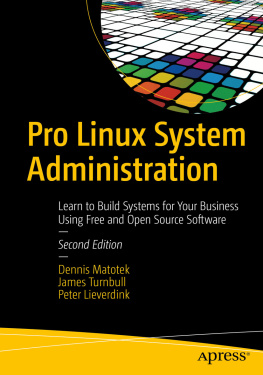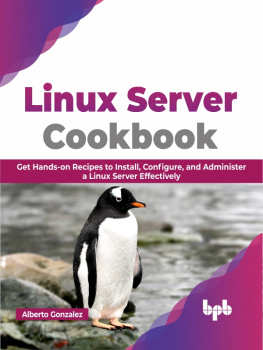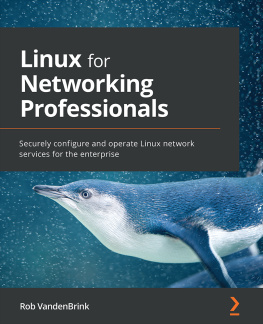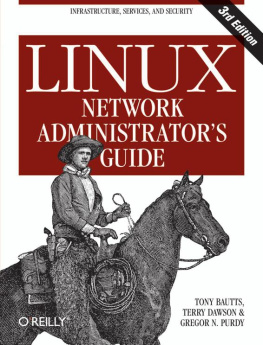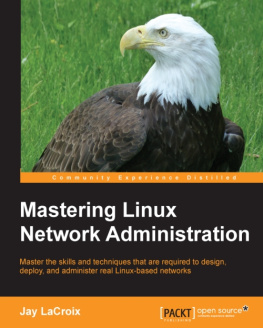Youve decided to learn more about System Administration or run your business on free and open source (FOSS) infrastructure? Congratulations and welcome to the world of Linux and open source software! This chapter will take you through the first steps into implementing that infrastructure. We cover choosing a platform or distribution, choosing appropriate and supported hardware, and finding the software you need. We also provide you with the location of some resources to help you support your Linux environment. Then, in Chapter , well show you how to install your first Linux hosts.
Linux Distributions
What is a Linux distribution ? Well, in simple terms it is a collection of applications, packages, management, and features that run on top of the Linux kernel . The kernel is what all distributions have in common (it is sometimes customized by the distribution maintainers), but at their core they all run Linux.
Note
So whats a kernel, you ask? Dont panic, well fill you in. The kernel is the core of all computer operating systems and is usually the layer that allows the operating system to interact with the hardware in your computer. The kernel contains software that allows you to make use of your hard disk drives, network cards, RAM, and other hardware components. In the Linux world, the kernel is based on code originally developed by the founder of Linux, Finnish developer Linus Torvalds. The kernel is now maintained by a community of open source developers, and changes go through a software life-cycle process. Your distribution will come with a version of that kernel, and like Windows or other operating systems it can be updated and upgraded to provide new features or fix bugs.
The world of Linux distributions may at first seem a little confusing. You are probably thinking, If they are all Linux, why are there so many different names, and which do I choose? You may have heard names like Red Hat, Fedora, Debian, and the more oddly titled Ubuntu (its a Zulu word that loosely translates as humanity toward others!). In this section, well explain what a distribution is, describe the ways in which distributions differ, and suggest some strategies for selecting the right distribution for you.
Distributions differ in several ways, and three of the most important are
First, different distributions are often designed for different purposes and provide different user experiences . Some distributions are designed as servers and others as desktops, and some are designed to perform particular functions, for example, as embedded systems. The majority of Linux installations still tend to be servers. While more Linux desktops are appearing, the numbers do not yet challenge Windows and Apple OS X dominance of the desktop market.
The second major difference between distributions is in their configuration . While some distributions keep all their configuration settings and files in the same locations, others vary their locations. Additionally, the process of installing and updating applications (which are usually installed by a package ) is not consistent across distributions. Many distributions use different application installation and management tools (generally called package management tools ). This can be confusing and can make administration difficult if you have an environment with differing distributions. In Chapter , well look closely at configuration management tools and how to overcome these sorts of issues.
The third difference is that distributions also have differing support models . Some, like Debian, CentOS, and Fedora, are maintained by a community of volunteers. Others, like Red Hat Enterprise Linux and Ubuntu, are maintained and supported by a commercial vendor. The software is still open source, but you can pay for support and maintenance. Most commercial Linux vendors support themselves through the sale of maintenance and support services.
Lets look at some of the available choices; this wont be a comprehensive list, but well cover most of the major popular distributions and then present some reasons for selecting particular platforms. Well also group together some of the like distributions, particularly focusing on distributions derived from two major distributions: CentOS (derived from the Red Hat distribution) and Ubuntu (itself a derivation from the Debian distribution).
Note
So how can one distribution be derived from another distribution? Well, open source software means that the source code is available to developers. Developers can pick and choose the features they want in a distribution and potentially create their own distribution. Many of the major distributions appeared because a developer or group of developers decided to create their own version of another distribution. These new derivations often have their own branding and features. Some remain close to the parent distribution, and others follow their own path.
Red Hat Enterprise Linux
Red Hat Enterprise Linux ( www.redhat.com/rhel/ ) is a popular commercially supported Linux platform. It comes in a number of versions, the two most common being Red Hat Enterprise Linux (also known as RHEL) and Red Hat Enterprise Linux Advanced Platform (RHELAP) . The major difference between the versions is the number of CPUs (central processing units) supported, with RHEL supporting up to two CPUs and RHELAP supporting an unlimited number.
Red Hat platforms are commonly used by corporate organizations as server platforms due to the dedicated support and service levels available from the vendor. Red Hat, and most distributions based on it, make use of the Red Hat Package Management (RPM) packaging system.
At the time of writing, RHEL costs start at approximately $350 a year for basic support and range up to $1,500 for premium support. Its more advanced cousin, RHELAP, ranges in cost from $1,500 to $2,500+ per year depending on the hardware architecture and level of support desired. These costs provide you with technical support and any needed patches or updates to the distribution.
Red Hat used to be run by a community of volunteers too until the distribution became so important to the technical infrastructure of commercial organizations that people were happy to pay for guaranteed support. Their original volunteer community still lives on as the Fedora Project.
CentOS
CentOS ( www.centos.org/ ) is a derivation of the Red Hat Enterprise Linux platform. Based on the same source code, it is available at no charge (and without Red Hats support). People who wish to make use of the Red Hat platform and its stability without paying for additional support commonly use it. It employs the same packaging system, RPM, and many of the same administration tools as the Red Hat product. It is one of the distributions we will be using in this edition of the book.
The Fedora Project
The Fedora Project ( http://fedoraproject.org/ ) is a distribution jointly run by the community and Red Hat. It is a derivative of Red Hat Enterprise Linux and provides a forward development platform for the product. Sponsored by Red Hat, Fedora is a testing ground for many of Red Hats new features. As a result, it is occasionally considered by some to be too edgy for commercial use. Many of the features introduced in Fedora often make their way into the new RHEL releases. Fedora also makes use of RPM packages and many of the same administration tools used by RHEL.

